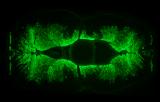"Nature is far more imaginative than we are."
Stamatios M. Krimigis, scientist at the John Hopkins Applied Physics Laboratory
 |
| Image obtained from NASA 2002 shows one of twin Voyager spacecrafts, launched in 1977. |
"We were planning, and it really paid off."
Dr. Edward C. Stone, NASA
These quotes seemingly contradict each other and yet are offered by fellow scientists following a 35-year project into our solar system and hoping the beyond.
Voyager spacecrafts (there were two) were launched in 1977 to explore Jupiter, Saturn, Uranus and Neptune. Today, both crafts are still going with key instruments on board still functional. Voyager 1 traveling at 38,000 miles per hour is reaching the outermost boundaries of the solar system, the last frontier for the empire of our Sun (heliosphere), as called by NY Times writer Kenneth Chang in his article Going, Going, Still Going? Voyager 1 at Solar System's Edge.
Scientists expected that two things would happen once the Voyager 1 reached the heliopause, the actual boundary of the solar system. First they anticipated that the solar wind would cease--a stream of charged particles blown out by the sun. The second sign of the solar system's edge would be a shift in the magnetic field.
As I was reading the story told by the data sent back from Voyager 1, I realized two things--how much we know and how much we are surprised by what we didn't know. To think that scientists from the 1970's could have built instruments to survive in space for 35 years and counting, far longer than they anticipated, is amazing. Those instruments are collecting data that we are using to expand our understanding. And as the article explains, those instruments are recording data that we never anticipated.
So, both quotes by the scientists involved in various parts of this process are descriptive of the process of science and, in a larger sense, the process of life. Planning and amazement are all part of the act of living.
Perhaps Albert Einstein said it best,


